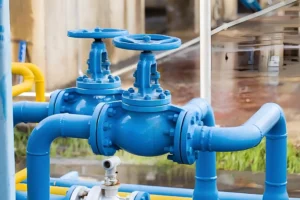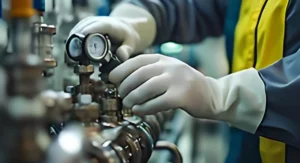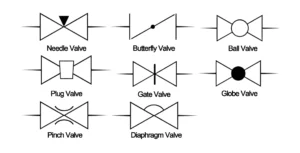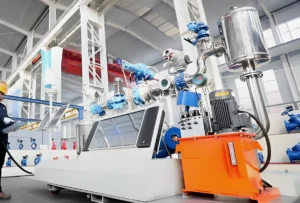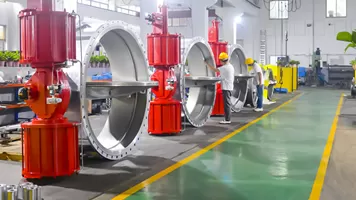With the continuous improvement in performance requirements for valves in industrial pipeline systems, the double eccentric butterfly valve has emerged as a core control component in petroleum, chemical, power, and other industries due to its exceptional sealing performance, low operating torque, and long service life. However, its design and manufacturing must strictly adhere to international standards to ensure safety and reliability. This article combines API 609 (Butterfly Valve Design Specifications) and API 6D (Pipeline Valve Specifications) to provide an in-depth exploration of the technical essentials and industrial applications of double eccentric butterfly valves.
I. Structural Features of Double Eccentric Butterfly Valves
The double eccentric butterfly valve (Double Eccentric Butterfly Valve) employs a dual eccentric design:
First Eccentricity: The valve stem axis is offset from the centerline of the disc sealing surface, reducing friction during opening and closing operations.
Second Eccentricity: The valve stem axis is offset from the pipeline centerline, optimizing the sealing contact trajectory through an eccentric angle.
Core Advantages:
Reduces opening/closing torque by 30%~50%, extending actuator service life;
Minimized sealing surface wear, suitable for high-frequency operation scenarios;
Compatible with both metal hard seals and soft seal structures.
II. Key Differences Between API 609 and API 6D Standards
The design of double eccentric butterfly valves must comply with both API 609 and API 6D requirements, though their focuses differ significantly:
Category API 609 (8th Edition) API 6D (25th Edition)
Scope Exclusively for butterfly valve design Covers pipeline valves (butterfly, ball, etc.)
Sealing Requirements Emphasizes low-pressure leakage class (e.g., Class VI) Prioritizes high-pressure sealing and durability testing
Fire Safety Optional API 607 fire testing Integrated API 6FA fire standard
Material Specifications Focus on corrosion-resistant materials Emphasizes fully welded structures and hydrogen embrittlement resistance
III. Critical Control Points in Design and Manufacturing
Structural Design
Eccentric Angle Optimization: Calculate the eccentric angle (typically 2°–5°) per API 609 requirements to ensure no interference between the disc and seat.
Seat Design: API 6D recommends a metal seat + elastomeric liner composite structure to accommodate a temperature range of -196°C to 600°C.
Material Selection
Valve Body Material: Must comply with API 6D Appendix H for sulfide stress cracking (SSC) resistance.
Disc Surface Treatment: Overlay welding with Stellite 6 or application of tungsten carbide coating to meet API 609 specifications for particle erosion resistance.
Testing and Certification
API 598/API 6D Pressure Testing: Includes shell strength tests and high-pressure gas sealing tests.
Cycle Life Testing: Conduct 1,000+ open/close cycles per API 6D Appendix F, with leakage rates ≤ ISO 5208 Rate A.
Fire Safety Testing: Compliance with API 607/6FA standards to ensure post-fire sealing integrity.
IV. Industry Application Cases
Liquefied Natural Gas (LNG) Pipelines
Requirement: Ultra-low temperature conditions (-162°C) with zero leakage.
Solution: API 6D-certified double eccentric butterfly valves with PTFE + 316L stainless steel seats, compliant with ISO 15848 low-emission certification.
Refinery Catalytic Cracking Units
Challenge: High-temperature catalyst particle erosion.
Resolution: Disc surface coated with tungsten carbide, paired with Inconel 718 alloy seats, meeting API 609 wear resistance requirements.
V. Future Development Trends
Intelligent Integration: Embed sensors to monitor torque and sealing status, complying with API 6D Appendix G for integrity management requirements.
Green Manufacturing: Adopt lightweight designs (optimizing wall thickness via finite element analysis as permitted by API 609) to reduce carbon footprint.
The standardized design of double eccentric butterfly valves under the framework of API 609 and API 6D ensures their reliability and cost-effectiveness in harsh operating conditions. Moving forward, as the energy industry’s demand grows for high-efficiency and environmentally friendly valves, dual-standard-compliant double eccentric butterfly valves will play an increasingly vital role in global pipeline engineering projects.


